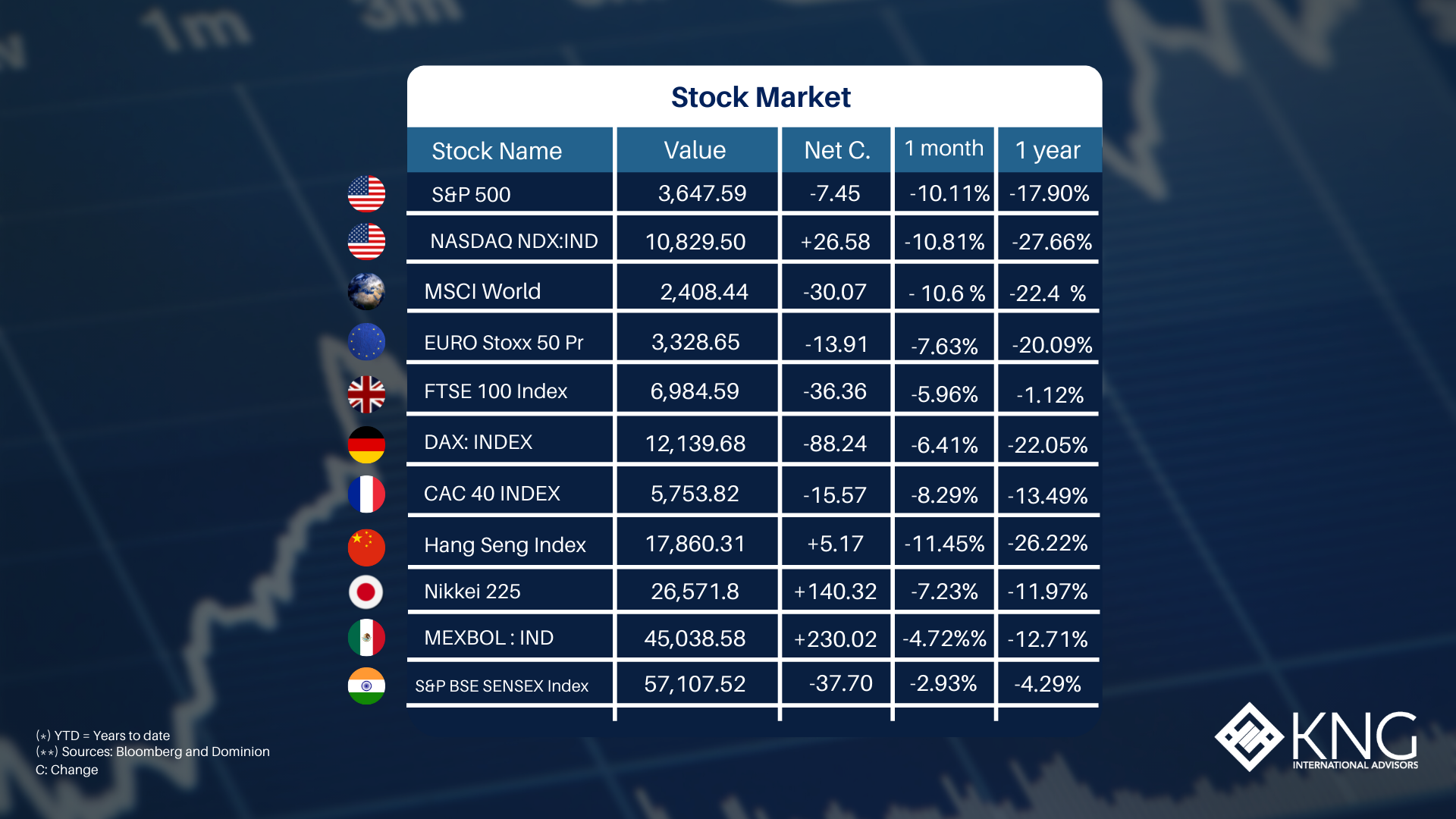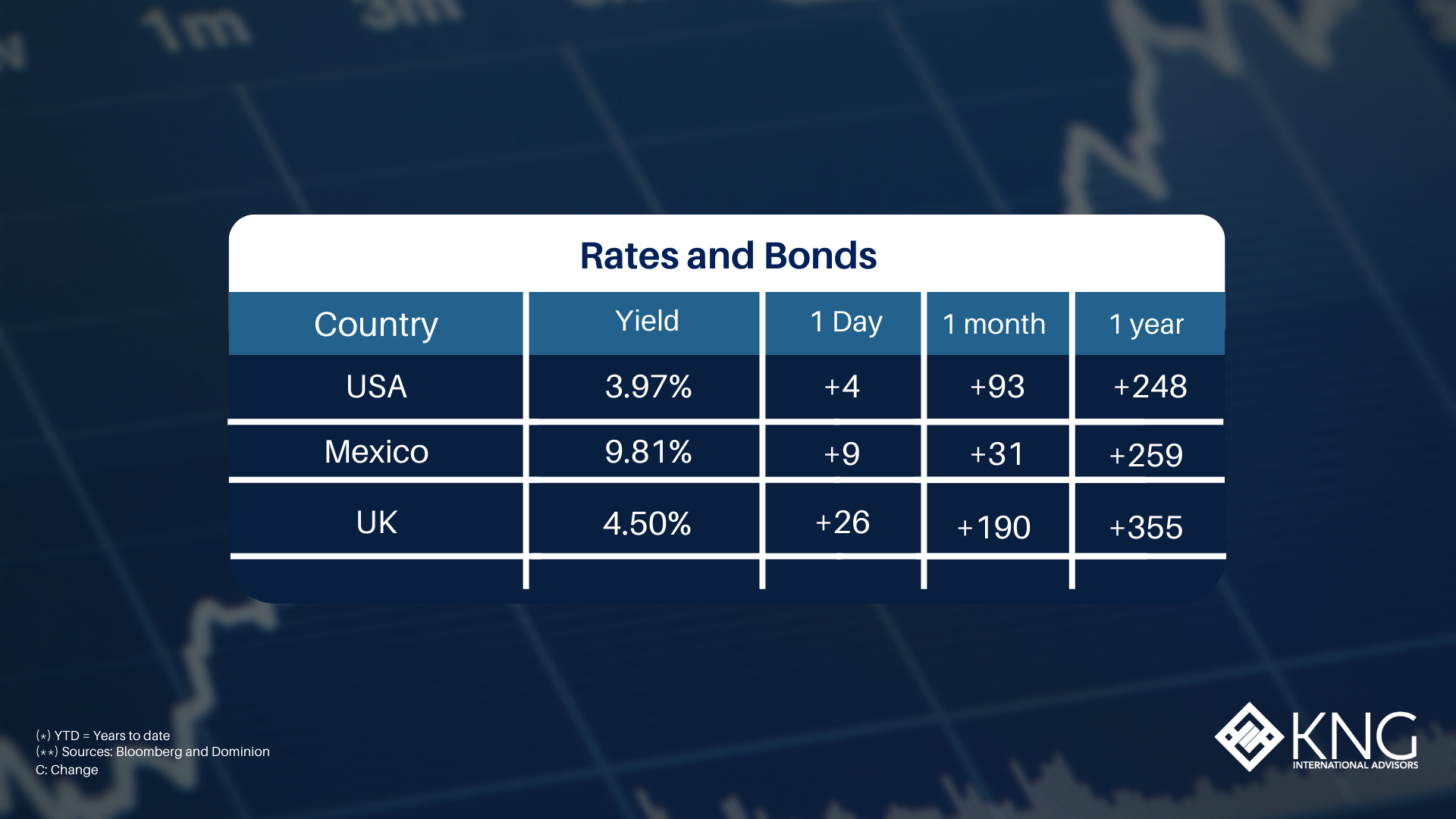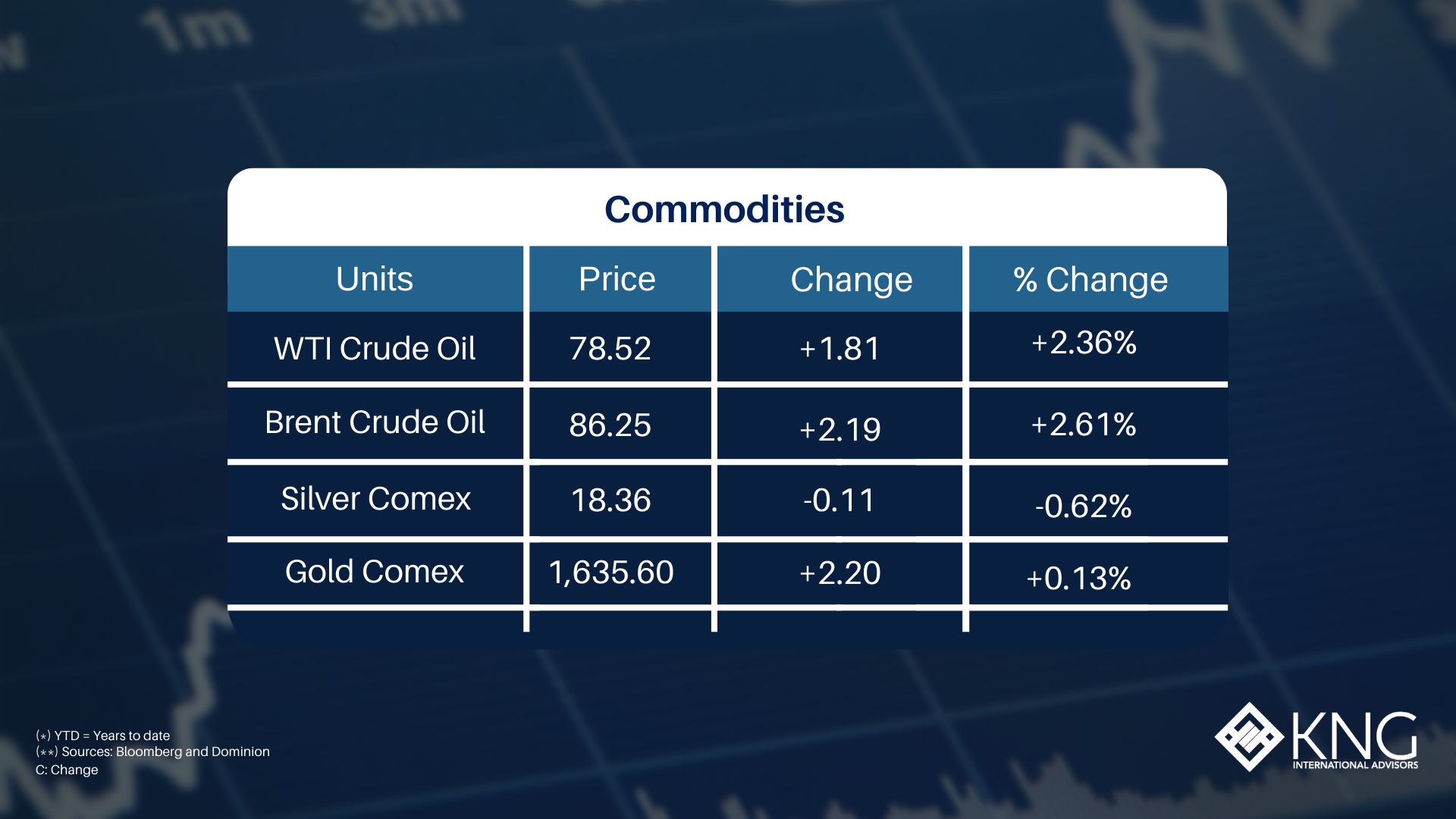Martes 27 de Septiembre del 2022
Listen to this financial market update by playing this audio...




Dominion Capital Strategies reiterates its opinion regarding the curent bear market:
We have, over the past two months, reiterated our view that the current bear market cycle is likely to persist until at least one major catalyst for a new bull market occurs. Over the coming weeks we will be digging deeper into what we mean by this and explaining what investors can be looking out for as early indicators for one of these bull market catalysts materializing.
First things first, what do we mean by a ‘catalyst’. This term, as with many others in professional investing, is borrowed from another industry. In chemistry, a catalyst is a substance that causes or accelerates a chemical reaction. When we talk about catalysts as investors, we are using the word to describe an event or outcome which will cause or accelerate a major change in markets. This catalyst could be political, economic, or specific to an industry or company. Whatever the case, it is the catalyst which will cause the change we are looking out for
In the case of the current market cycle, we are in, a catalyst for a new bull market would be some outcome or event which would cause a major change in markets and act to drive a new bull market cycle.
This week...
We’ll be talking about the first catalyst we are looking out for, which (if it occurs) is likely to drive a new bull market cycle in stocks. Namely, a pivot or pause in central bank policy.
Central banks in most of the developed world, led by the US Federal Reserve, are raising interest rates. Last week, the US Federal Reserve again raised interest rates by 0.75%, bringing the US rate range up to 3.0 - 3.25%. The Bank of England raised its base rate by 0.5% to 2.25%. Rates in these and other major economies were effectively 0% at the start of the year and this rapid change marks one of the fastest increases in rates in history.
Central banks are doing this in response to the highest rates of inflation in forty years. Higher rates are the best (and pretty much only) tool available to central banks to try and fight inflation. By raising rates, access to debt capital is reduced by making it more expensive to borrow, this in turn feeds through to slowing economic activity, which acts as a break to inflation.
This process has a major effect on financial markets and asset prices. Higher rates and the prospect of slowing economic growth means, for stock markets, a higher likelihood of reduced corporate profit growth (via a slowing economy and more expensive debt servicing) and thus equity markets can often see bouts of selling. This selling can be especially pronounced when the starting position for equity markets is one of high valuations, as was the case at the start of 2022.
As such, a change (or even the prospect of a change) in central bank policy away from raising rates and towards either pausing or pivoting into rate cuts, is a big deal for markets. Equity markets have in the recent past seen very strong positive rallies simply on a hint from staff at central banks that they ‘might’ consider a pause or pivot in policy.
Currently, there is no serious talk (yet) of pausing rate hikes, let alone pivoting into rate cuts. But, we do know that there is a growing difference of opinion within central banks. Some, like the US Fed and Bank of England, hold committee meetings where members vote on what the rate decision should be. We can see, by looking at these decisions, how many members of each respective committee voted for either rate hikes, pausing, or pivoting.
In the case of the Bank of England’s most recent decision, all members voted for a rate hike, but one member did argue for a much lower hike than was agreed. This is, we would argue, an early indication that there is some resistance to the current pace of rate hikes. There is some early indication of similarly marginal but growing resistance to the current policy of big rate hikes in the United States too.
What typically triggers a pausing or pivot in central bank policies is a major slowing in the economy. The prospect of much higher unemployment and even economic recession can, and has many times in the past, force the hand of central bankers to change direction. This again is an early indicator for a potential change of policy, evidence of a dramatic economic slowdown.
We are not there yet, in either case. The economy does appear to be slowing, but not drastically just yet. And there is scant evidence of an imminent central bank policy pause or pivot in the near term, either.
It helps, however, for investors to understand that, when a pause or pivot eventually looks like a real possibility, that will be a good time to consider ramping up allocations to equities in anticipation of a major catalyst for a new bull market. We are not there yet, but it helps to be on the look-out for the early signs of catalysts like this before they occur!
Sources: Bloomberg, Yahoo Finance, Marketwatch, MSCI. Copyright © 2021 Dominion Capital Strategies, all rights reserved.